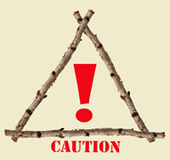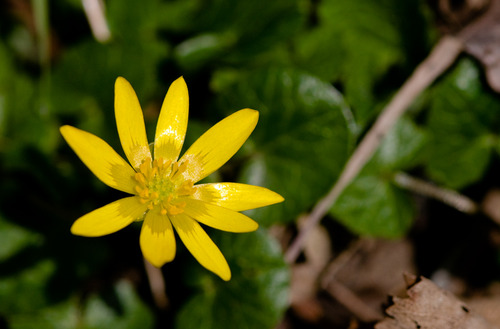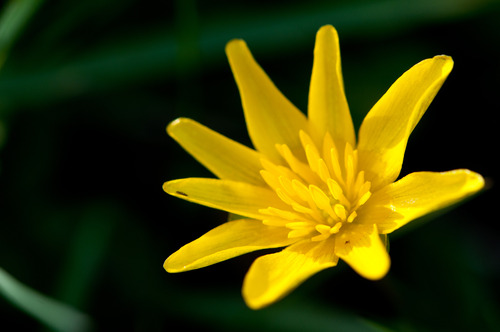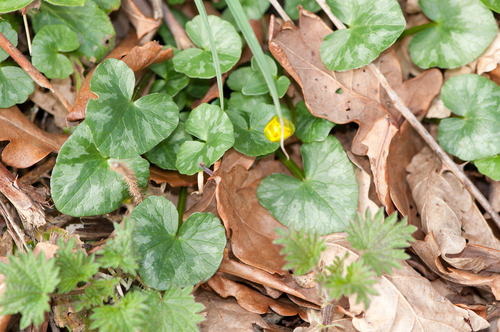

All parts of Ranunculus ficaria are poisonous. The sap may also cause irritation to the skin. The toxins are destroyed by cooking or drying, but caution is advised.



Lesser Celandine Ranunculus ficaria can be found in early spring, forming large carpets of glossy yellow flowers and vibrant green leaves. It often frequents damps ground, and can be found by rivers, flood plains, gardens and quite often on the edges of stream banks. The roots of lesser celandine resemble a bunch of grapes, which gave rise to the common name of 'pilewort'.
LEAVES -the dark green heart-shaped leaves have been eaten in their early stages of growth. They are however best used cooked.
PETALS - these are very bright and shiny, which often draw the attraction from passers by. The petals have been used to clean/whiten teeth.
ROOTS - the roots are what this little plant is famed for. The bulbous roots were described as looking like haemorrhoids and were often used to help treat this common complaint. The roots have also been used as an emergency food, but they must be well cooked in the embers of a fire first.
EDIBLE PARTS - Leaves, stalks, buds and roots. Please refer for the cautions above.

heather on 05/04/10
I have encouraged the lesser celandine in my garden for its beauty and also its property of making the soil it grows in very fine, the leaves also die back very quickly and it seems to dissuade other unwanted plants from growing around it and the first flower I remember with nostalgia at about seven years of age. I have read it is useful for nasal polyps but I wonder if I could use it for a benign cervical polyp